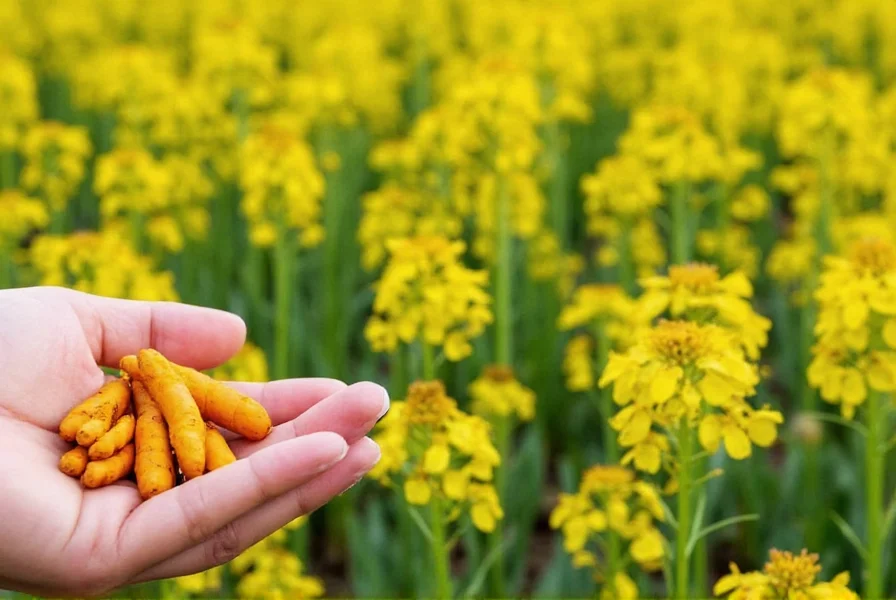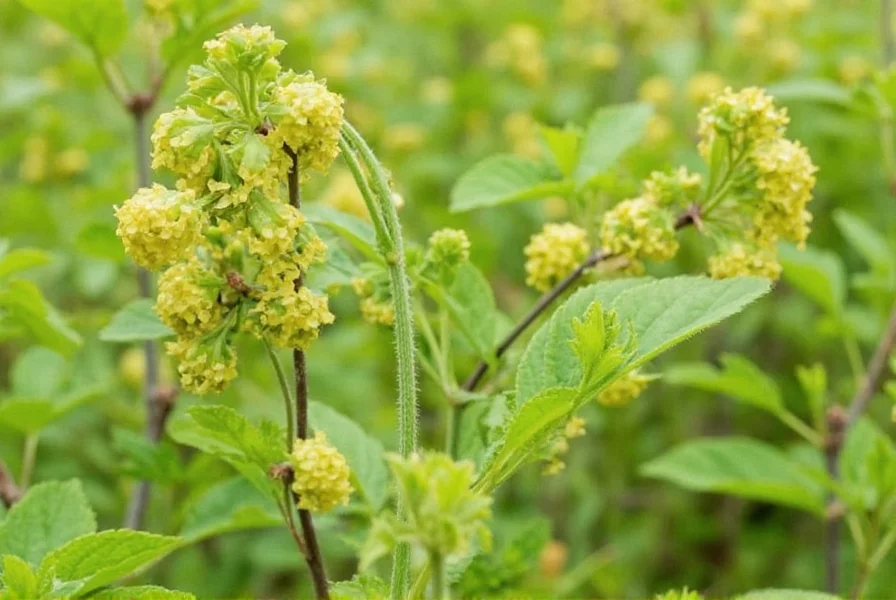Growing your own turmeric brings vibrant color and potent health benefits right to your garden. This ancient spice, scientifically known as Curcuma longa, thrives in tropical conditions but can be cultivated in diverse climates with proper care. Whether you're an experienced gardener or trying your first spice crop, understanding turmeric's specific needs ensures a successful harvest of this golden root.
Understanding Turmeric Basics
Turmeric belongs to the ginger family and grows from underground rhizomes rather than seeds. The plant features broad leaves and can reach 3-4 feet in height when mature. While native to Southeast Asia, gardeners worldwide can successfully grow turmeric by replicating its preferred conditions. The active compound curcumin gives turmeric its distinctive yellow color and numerous health properties.
Most home gardeners achieve harvests within 8-10 months from planting. Turmeric grows best in USDA zones 8-11 but can be grown as an annual in cooler climates or in containers that can be moved indoors during cold months. The ideal temperature range is 25-35°C (77-95°F) with high humidity.
Selecting Quality Rhizomes for Planting
Start with fresh, organic turmeric rhizomes from a reputable source. Look for plump pieces with multiple visible buds or 'eyes' - these will develop into new shoots. Avoid shriveled or moldy rhizomes. Organic rhizomes work best as conventional grocery store varieties may be treated with growth inhibitors.
Before planting, break your rhizome into smaller sections, each containing 1-3 buds. Allow cut surfaces to dry for 24-48 hours to prevent rot after planting. This simple preparation significantly increases your success rate when learning how to grow turmeric from rhizomes.

Soil Preparation Requirements
Turmeric demands well-draining soil rich in organic matter. Create an ideal growing medium by mixing equal parts garden soil, compost, and perlite or sand. The optimal pH range is slightly acidic to neutral (5.5-7.5). Test your soil before planting to make necessary amendments.
| Soil Component | Percentage | Purpose |
|---|---|---|
| Garden soil | 40% | Provides structure and minerals |
| Compost | 40% | Supplies nutrients and improves moisture retention |
| Perlite/sand | 20% | Ensures proper drainage |
For container growing, choose pots at least 12 inches deep with adequate drainage holes. Fill with your prepared soil mix, leaving 2-3 inches of space below the rim for watering.
Planting Your Turmeric Rhizomes
Plant turmeric rhizomes in spring after the last frost when soil temperatures reach at least 20°C (68°F). Place rhizome sections horizontally with buds facing up, 5-8 cm (2-3 inches) deep and 15-20 cm (6-8 inches) apart. Cover with soil and water thoroughly.
When considering how to grow turmeric in containers, use one rhizome per 12-inch pot. Container gardening offers flexibility for moving plants to optimal light conditions and protecting them from temperature extremes. Remember that turmeric grown in containers may require more frequent watering than garden-planted specimens.
Caring for Growing Turmeric Plants
Water consistently to keep soil moist but not waterlogged. Turmeric needs about 1-1.5 inches of water weekly. During dry periods, increase watering frequency. Mulch around plants to maintain moisture and regulate soil temperature.
Turmeric prefers partial shade in hot climates but can tolerate full sun in cooler regions. Fertilize monthly with a balanced organic fertilizer or compost tea. Avoid high-nitrogen fertilizers that promote leaf growth at the expense of rhizome development.
Monitor for common pests like aphids and spider mites. Treat infestations with insecticidal soap or neem oil. Prevent fungal diseases by ensuring proper air circulation and avoiding overhead watering.
Harvesting and Storing Your Turmeric
Harvest turmeric when the leaves turn yellow and begin to die back, typically 8-10 months after planting. Stop watering 2-3 weeks before harvest to dry the soil slightly. Carefully dig around the plants to avoid damaging the rhizomes.
Clean harvested rhizomes by gently brushing off soil (avoid washing with water). Cure them in a warm, dry place for 7-10 days before storage. Store cured turmeric in a cool, dark location or preserve by freezing, drying, or making into paste.

Troubleshooting Common Growing Problems
Yellowing leaves: Often indicates overwatering or poor drainage. Reduce watering frequency and ensure proper soil aeration.
Rotting rhizomes: Usually caused by waterlogged soil. Improve drainage and avoid planting in low-lying areas. When learning how to prevent turmeric rot, remember that slightly dry is better than too wet.
Slow growth: May result from insufficient warmth, poor soil nutrition, or inadequate light. Address the specific deficiency with appropriate amendments.
Advanced Growing Techniques
For larger harvests, try these proven methods:
- Apply a balanced fertilizer with higher potassium content during rhizome development
- Use black plastic mulch to warm soil in cooler climates
- Practice succession planting by staggering rhizome planting dates
- Try companion planting with marigolds to deter pests naturally
When exploring how to grow turmeric organically, focus on building healthy soil with compost and natural amendments rather than synthetic inputs. Healthy soil produces more resilient plants with better yields.
Frequently Asked Questions
Can I grow turmeric indoors year-round?
Yes, turmeric grows well indoors with proper conditions. Use a large container (at least 12 inches deep) with drainage holes, place in a south-facing window or under grow lights (12-14 hours daily), maintain temperatures between 25-30°C (77-86°F), and keep soil consistently moist. Indoor turmeric may grow slower than outdoor plants but can be cultivated year-round with adequate light and warmth.
How often should I water turmeric plants?
Water turmeric plants when the top inch of soil feels dry, typically 1-2 times weekly depending on climate. During active growth (spring-summer), maintain consistent moisture without waterlogging. Reduce watering as leaves begin to yellow before harvest. Container plants generally need more frequent watering than garden-planted turmeric. The key is keeping soil moist but never soggy to prevent rhizome rot while supporting healthy growth.
What's the best time to plant turmeric?
The optimal planting time for turmeric is spring, after the last frost when soil temperatures reach at least 20°C (68°F). In tropical regions, plant at the beginning of the rainy season. For container gardening, you can start turmeric year-round if you can maintain proper temperature and light conditions. When growing in temperate climates, aim to plant between March and May to allow the full 8-10 month growing season before cold weather returns.
How do I know when turmeric is ready to harvest?
Turmeric is ready for harvest 8-10 months after planting, when the leaves turn yellow and begin to die back naturally. The stems will become dry and brittle. Stop watering 2-3 weeks before harvest to allow the soil to dry slightly, which makes digging easier and improves storage quality. Gently dig around the plant to check rhizome size - mature turmeric rhizomes should be well-developed with multiple branches and a deep orange color when cut open.
Can I grow turmeric in cold climates?
Yes, you can successfully grow turmeric in cold climates with some adaptations. Start rhizomes indoors 6-8 weeks before last frost, then transplant outdoors when temperatures consistently stay above 20°C (68°F). Use black plastic mulch to warm the soil. In containers, move plants indoors before temperatures drop below 15°C (59°F). In USDA zones below 8, treat turmeric as an annual crop rather than expecting perennial growth. The key is providing sufficient warmth during the growing season to allow rhizomes to fully develop before cold weather arrives.











 浙公网安备
33010002000092号
浙公网安备
33010002000092号 浙B2-20120091-4
浙B2-20120091-4